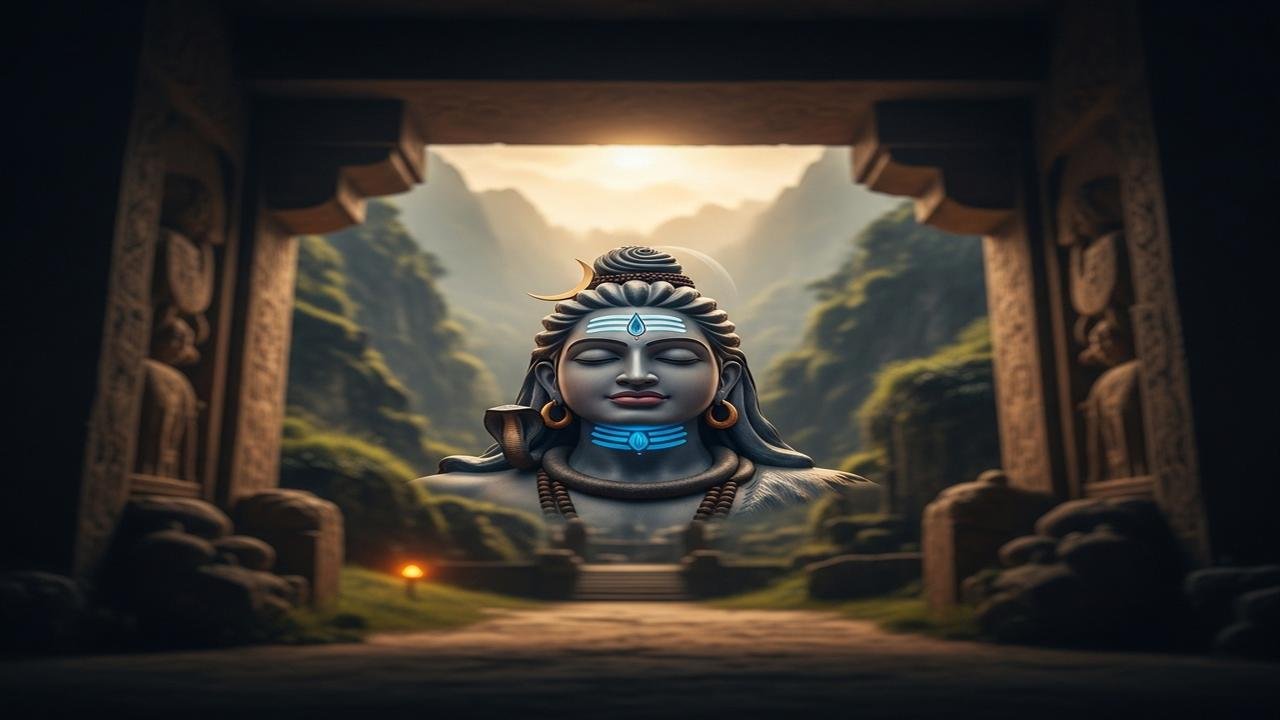Why Lord Shiva Has a Blue Throat, The Untold Story

The mystery of Lord Shiva’s blue throat
There are stories in our homes and temples that feel like warm lamps — small lights that guide us through dark nights. One such lamp is the tale of Lord Shiva’s blue throat. Many children listen to this story with wide eyes, and adults find comfort in its deeper meaning. It is a story of sacrifice, protection, and the power to turn poison into blessing.
Long ago, during the great churning of the ocean known as Samudra Manthan, gods and demons worked together to obtain the nectar of immortality. The sea gave many gifts, but it also released a deadly poison called Halahala. The poison began to spread, threatening to destroy the world. The gods appealed to Lord Shiva for help.
Shiva, compassionate and fearless, decided to drink the poison to save all beings. He held it in his throat instead of swallowing, to prevent it from entering his body. His beloved Goddess Parvati, seeing his suffering, clasped his neck to stop the poison from going down. The poison turned his throat deep blue, and from then on he became known as Neelkanth — the blue-throated one.
The story is simple, yet powerful. On the surface it tells how a god saved the world. Look a little deeper and you find a mirror for life. Each of us meets small and large poisons: anger, jealousy, grief, anxiety. Shiva’s act teaches that one way to protect the world is to absorb pain, transform it, and not let it spread. His blue throat reminds us that suffering can be held with compassion rather than returned as harm.
Symbols in this story are rich and meaningful.
- Blue throat: the mark of sacrifice, showing willingness to carry pain for the sake of others.
- Poison: human suffering and negative forces that must be faced, not ignored.
- Parvati’s support: the balance of strength and tenderness, reminding us that courage needs love.
- Neelkanth name: a call to transform danger into protection, a central ideal in dharma.
In temples and festivals, the story of Neelkanth lives on. During Maha Shivaratri, devotees fast, chant, and keep night vigils, remembering Shiva’s sacrifice and their own inner struggles. Many offer milk, water, and bilva leaves to Shiva lingams, symbolizing purification and devotion. Pilgrimages to places like the Neelkanth Mahadev temple near Rishikesh allow people to connect with the legend in a natural setting, feeling the river’s presence as a witness to the ancient tale.
Artists and priests portray the blue throat in sculptures and paintings to teach younger generations. Each image carries a lesson: protection does not mean violence; it means absorbing harm and returning peace. The tale also supports social values — those who quietly shoulder burdens for the community are honored, whether they are mothers, teachers, or caregivers.
Today, the story speaks to modern life as well. We face invisible poisons like stress, misinformation, and loneliness. Shiva’s example encourages us to be resilient and compassionate. Spiritual practices — chanting “Om Namah Shivaya,” meditating on the breath, or simply offering a moment of loving-kindness — are practical ways to transform our daily poisons into calm and clarity.
To remember Neelkanth is to remember hope. It tells us that even when life turns dark, a heart that chooses to hold, heal, and protect can turn poison into blessing. That is the living mystery of Shiva’s blue throat.
Conclusion: When you think of Neelkanth, reflect for a moment on the small sacrifices you can offer — a kind word, a patient listening, a steady presence. In these simple acts we become part of the same gentle transformation that turned poison into life.
